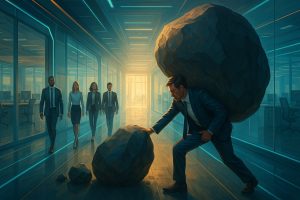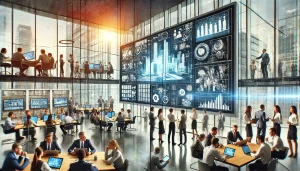
You know that feeling when you’re leading a meeting and the room goes quiet?
No questions. No reactions. Just a sea of muted mics and blank stares.
At first, it might seem like things are fine, maybe everyone just agrees.
But more often than not, silence isn’t agreement.
It’s disengagement. Or worse, it’s a sign your team has checked out.
What Silence is Really Telling You
When people stop contributing, it doesn’t mean they don’t care.
It could mean:
- They don’t feel safe to speak up
- They’re not clear on the purpose of the meeting
- They’ve given feedback in the past and nothing changed
- They’re tired of meetings that don’t go anywhere
- Or… they’ve simply stopped believing their input matters
And once that starts, momentum dies. The same voices keep talking.
The best ideas stay buried. And sometimes so do the problems you don’t hear about.
They don’t magically disappear, they just get harder to fix later.
How to Turn Things Around
If you’ve noticed a drop in feedback or participation, don’t brush it off.
It’s not just a people issue, it’s a leadership opportunity.
Here’s how to break the silence:
1. Stop asking “Any thoughts?”
Start asking better questions. Be specific. Invite opinions.
Try “What risks do you see with this?” or “What would you do differently?”
2. Give everyone a chance to talk
Rotate speakers. Don’t let a few voices dominate. Ask someone who hasn’t spoken what they think, without putting them on the spot.
3. Change the format
Try breakout sessions, polls, or reverse the structure so updates come from the team, not just the top.
4. Make it safe to disagree
If someone challenges an idea, thank them. Reward honesty. Set the tone that respectful disagreement is welcome.
5. Don’t meet unless it matters
If there’s no clear purpose or outcome, don’t meet. People will engage more if they know their time isn’t being wasted.
6. Follow up
If someone raises a concern or makes a suggestion, show you heard them. Even if the answer is “not right now,” acknowledge it.
7. Call it out gently
Say what you’re seeing. “Hey, it feels a bit quiet today. Is something unclear? Or is there a reason we’re holding back?”
You’d be surprised how often this simple prompt opens the floodgates.
Don’t Mistake Silence for Success
A quiet meeting might feel easier in the moment, but it’s a problem waiting to grow.
If people aren’t speaking up, your biggest risks and best ideas are probably going unheard.
Fixing it isn’t about forcing people to talk.
It’s about creating an environment where they want to.
Because when people feel heard, they show up.
They challenge ideas.
They collaborate better.
And your team starts moving forward again.









